Use PDLS with the EXT4 extension board¶
This technical note details how to use PDLS with the EXT4 extension board.
Danger
When the EXT4 extension board is connected to the main controller board, ensure only one power source is used.
Either through the USB cable:
- Remove the two CR2450 batteries, and
- Power the main controller board and the EXT4 through the USB cable;
or with the two CR2450 batteries:
- Disconnect the USB cable, and
- Power the main controller board and the EXT4 with the two CR2450 batteries.
EXT4 extension board¶
The EXT4 extension board is specifically designed to be used as an Internet of Thing, or IoT, device.
It features the circuit for a small e-paper display with a panel power control circuit, an RGB LED, a button, an 3-axis accelerometer, a temperature and humidity sensor, a passive NFC, a Flash SPI memory and pads for an optional SPI memory.
Warning
The EXT4 extension board requires the panelPower signal, as the power control circuit is normally off.
Danger
The EXT4 extension board and the EPDK-Matter developement kit require power and signals at 3.3V.
Board configuration¶
Driving an e-paper display through the EXT4 extension board requires a minimum of 9 signals, and up to 20 signals with all the sensors and interrupts, RGB LED and external memory.
| Signal | Minimal | Sensors | Optional |
|---|---|---|---|
| Power | +3.3V, Ground | ||
| SPI bus | Clock, Data in | Data out | |
| Panel | Select, Reset, Busy, Data/Command, Power |
||
| Flash | Select, Second select | ||
| I²C bus | Clock, Data | ||
| RGB LED | Data | ||
| Sensors | Interrupts x5 | ||
| Total | 9 | 2 | 9 |
The standard board definition of PDLS can be used with the EXT4 extension board, with three major differences compared to EXT3.1 extension board:
-
panelPowerin pin 20 is required, as the EXT4 extension board features a panel power control circuit, normally off; -
panelCSSis not available, as the EXT4 extension board drives only small panels; -
touchInandtouchResetare not available, as the EXT4 extension board does not support touch.
Like for the EXT3.1 extension board, the flashCSS signal in pin 15 is optional, as the EXT4 extension board provides pads for a second external SPI memory, Flash or SRAM.
Connector¶
The EXT4 extension board features a 2x10-way connector.
Pins 1 to 10 are compatible with the EXT3 and EXT3.1 extension boards.
| Variable | Number | Signal | Type | Function |
|---|---|---|---|---|
| 1 | VCC +3.3V | Power | Power Supply | |
| 2 | SPI SCK | SPI | SPI clock | |
.panelBusy |
3 | Panel !BUSY | Output | Panel busy signal |
.panelDC |
4 | Panel D/C | Input | Panel Data/Command control |
.panelReset |
5 | Panel /RESET | Input | Panel reset |
| 6 | SPI MISO | SPI | SPI MISO | |
| 7 | SPI MOSI | SPI | SPI MOSI | |
.flashCS |
8 | Flash /CS | Input | Flash chip select |
.panelCS |
9 | Panel /CS | Input | Panel chip select |
| 10 | Ground | Power | Ground |
Pins 11 to 20 are specific to the EXT4 extension board. All the signals are new, except the second SPI memory chip select.
| Variable | Number | Signal | Type | Function |
|---|---|---|---|---|
.panelPOWER |
11 | P_POWER | Input | MOSFET for panel power control |
| 12 | SWITCH | Output | Switch position | |
| 13 | LED_DATA | Input | WS2813C data signal | |
| 14 | I2C_SDA | I²C | I²C data signal, bi-directional | |
| 15 | I2C_SCL | I²C | I²C clock signal | |
.flashCSS |
16 | F_CS2 | Input | Second SPI memory chip select |
| 17 | NFC_FD | Output | NT3H2111 field detect interrupt | |
| 18 | IMU_INT1 | Output | LIS2DH12 first interrupt | |
| 19 | IMU_INT2 | Output | LIS2DH12 second interrupt | |
| 20 | RHT_INT | Output | HDC2080 interrupt |
The SPI bus connects the screen, Flash memory and optional second memory. The SPI MISO signal is used as SDIO to read the OTP memory. Pull-up resistors on the chip select lines maintain the Flash memory and the optional second memory unselected.
The I²C bus connects the HDC2080 temperature and relative humidity sensor, the LIS2DH12 3-axis accelerometer, and the NT3H2111 passive NFC controller.
Screens¶
The EXT4 extension board supports the monochrome screens with wide temperature and embedded fast update (film K) up to 2.90”.
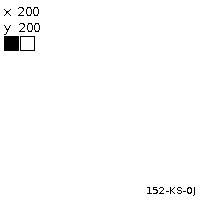
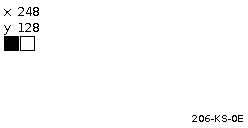
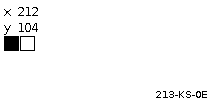
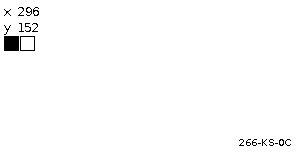
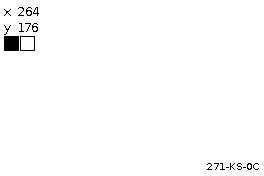
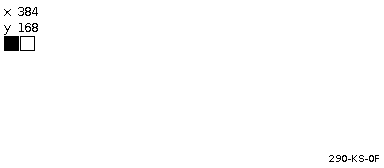
The same content on different screens
The EXT4 extension board also supports the colour black-white-red-yellow screens (film Q).
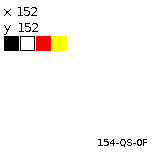
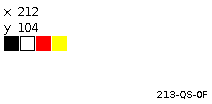
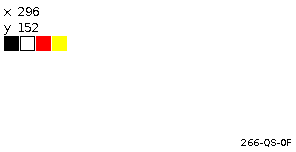
Sensors¶
The PDLS library does not manage the I²C sensors, the button or the addressable RGB LED. However, it exposes the interrupt signals of the I²C sensors, the button and the addressable RGB LED.
| Reference | Manufacturer | Function |
|---|---|---|
| LIS2DH12 | STMicroelectronics | MEMS digital output motion sensor: ultra-low-power high-performance 3-axis “femto” accelerometer |
| NT3H2111 | NXP | NTAG I²C plus 1K, NFC Forum Type 2 Tag with I²C interface |
| MX25R8035F | Macronix | Ultra Low Power 1M-bit Flash memory |
| HDC2080 | Texas Instruments | Ultra-low-power digital relative humidity sensor with interrupt |
| Not populated | Pads for second SPI external memory | |
| WS2813C | World Semi | Low power addressable RGB LED |
Configure¶
The EXT4 extension board requires the panelPower in pin 11 , as the power control circuit is normally off.
Recommended procedure¶
The recommended procedure is valid for all the editions and all the variants.
pins_t myBoard = boardArduinoNanoMatter_EXT4;
The board with the _EXT4 suffix specifically target the EXT4 extension board.
// Check EXT4
if (myBoard.scope != BOARD_EXT4)
{
hV_HAL_log(LEVEL_CRITICAL, "Board EXT4 required");
hV_HAL_exit(RESULT_ERROR);
}
The code tests that the board supports the EXT4.
Custom board procedure¶
A custom board is defined on the main program with .panelPower set.
Example
This example shows a modified board definition, to be adapted to the specific main controller board.
const pins_t myBoard_EXT4 =
{
.scope = BOARD_EXT4;
.panelBusy = 13, ///< EXT4 pin 3 Red
.panelDC = 12, ///< EXT4 pin 4 Orange
.panelReset = 11, ///< EXT4 pin 5 Yellow
.flashCS = 10, ///< EXT4 pin 8 Violet
.panelCS = 17, ///< EXT4 pin 9 Grey
.panelCSS = NOT_CONNECTED, ///< Signal not available
.flashCSS = 15, ///< EXT4 pin 15 Green2, optional
.touchInt = NOT_CONNECTED, ///< Signal not available
.touchReset = NOT_CONNECTED, ///< Signal not available
.panelPower = 16, ///< EXT4 pin 11 White2, required
.cardCS = NOT_CONNECTED, ///< Separate SD-card board
.cardDetect = NOT_CONNECTED, ///< Separate SD-card board
// EXT4 specific
.button = NOT_CONNECTED, // EXT4 pin 12 Grey
.ledData = NOT_CONNECTED, // EXT4 pin 13 Violet WS2813C
.nfcFD = NOT_CONNECTED, // EXT4 pin 17 Orange NT3H2111 !Field detect, I2C address = 0x55
.imuInt1 = NOT_CONNECTED, // EXT4 pin 18 Red LIS2DH12 !INT2, I2C address = 0x19
.imuInt2 = NOT_CONNECTED, // EXT4 pin 19 Brown LIS2DH12 !INT1, I2C address = 0x19
.weatherInt = NOT_CONNECTED // EXT4 pin 20 Black HDC2080 !INT, I2C address = 0x40
// End of EXT4 specific
};
// Driver
#include "Pervasive_Wide_Small.h"
Pervasive_Wide_Small myDriver(eScreen_EPD_271_KS_09, myBoard_EXT4);
// Screen
#include "PDLS_Basic.h"
Screen_EPD myScreen(&myDriver);
Custom pin procedure¶
A standard board definition is used and a custom pin is specified as panel power at run-time.
// Driver
#include "Pervasive_Wide_Small.h"
Pervasive_Wide_Small myDriver(eScreen_EPD_271_KS_09, boardArduinoNanoMatter);
// Screen
#include "PDLS_Basic.h"
Screen_EPD myScreen(&myDriver);
myScreen.setPanelPowerPin(16);
myScreen.begin();
setPanelPowerPin()- defines the pin used for panel power.
The required parameter is
- the GPIO or pin number for the panel power signal.
Warning
The setPanelPowerPin() function should always be called before begin() so the panel power pin is initialised.
Legacy procedures¶
Legacy release 8
The legacy procedure relies on the PDLS_EXT4_Basic_Matter variant. It targets the screens with wide temperature and embedded fast update (film K); and the boards Arduino Nano Matter and Silicon Labs BGM220 Explorer.
Install the PDLS_EXT4_Basic_Matter library through the Arduino IDE. Learn more at the PDLS_EXT4_Basic_Matter GitHub repository .
Legacy release 9
#define BOARD_EXT4 4 ///< EXT4 board
#define USE_EXT_BOARD BOARD_EXT4 ///< Selected board
On the hV_List_Options header file, set USE_EXT_BOARD to BOARD_EXT4.
Example
This is the definition of the Arduino Nano Matter board when BOARD_EXT4 is selected.
///
/// @brief Arduino Nano Matter with Silicon Labs MGM240P, tested
/// @details Variant of boardArduinoNanoMatter with panelPower, button and LED for EXT4
/// @note Numbers refer to pins
/// @note Recommended board
///
const pins_t boardArduinoNanoMatter =
{
.panelBusy = 10, ///< EXT3 and EXT3-1 pin 3 Red -> D10
.panelDC = 9, ///< EXT3 and EXT3-1 pin 4 Orange -> D9
.panelReset = 8, ///< EXT3 and EXT3-1 pin 5 Yellow -> D8
.flashCS = 7, ///< EXT3 and EXT3-1 pin 8 Violet -> D7
.panelCS = 6, ///< EXT3 and EXT3-1 pin 9 Grey -> D6
.panelCSS = NOT_CONNECTED, ///< EXT4 not available
.flashCSS = 5, ///< EXT3 pin 20 or EXT3-1 pin 11 Black2 -> D5
.touchInt = NOT_CONNECTED, ///< EXT3-Touch pin 3 Red
.touchReset = NOT_CONNECTED, ///< EXT3-Touch pin 4 Orange
.panelPower = 2, ///< EXT4 pin 20 White -> D2
.cardCS = NOT_CONNECTED, ///< External SD-card board
.cardDetect = NOT_CONNECTED, ///< External SD-card board
// EXT4 specific
.button = 3, // EXT4 pin 12 Grey -> D3
.ledData = 4, // EXT4 pin 13 Violet WS2813C -> D4
.nfcFD = 17, // EXT4 pin 17 Orange NFC NT3H2111_2211 !Field detect, I2C address = 0x55 -> A3
.imuInt1 = 16, // EXT4 pin 18 Red LIS2DH12 !INT1, I2C address = 0x19 -> A2
.imuInt2 = 15, // EXT4 pin 19 Brown LIS2DH12 !INT2, I2C address = 0x19 -> A1
.weatherInt = 14, // EXT4 pin 20 Black HDC2080 !INT, I2C address = 0x40 -> A0
};
Use¶
Use the screen like any other.